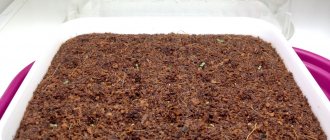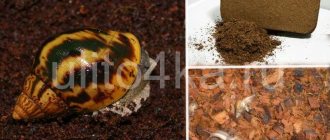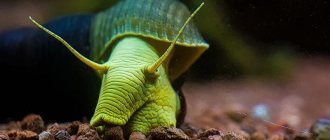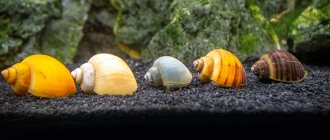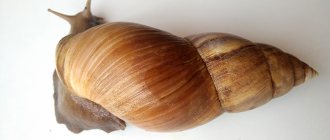Many people try to create favorable conditions for snails in their terrarium. Natural ingredients suitable for decoration are used. You can use twigs, driftwood, moss, leaves. All this will make the terrarium beautiful. In addition, it will make the conditions for the mollusk as close to natural as possible. It's not enough to just buy moss. You need to know how to use it correctly - process, store, secure, care for it.
Many people try to create favorable conditions in the terrarium for snails.
Most often, snail moss is used for beauty purposes. It can be used as a separate component. Some combine it with various soils. The substrate can be bought at a flower shop or collected yourself. If care is poor, mold and rot will begin to form. That is why it is worth monitoring the humidity level in the terrarium. A flower sprayer is perfect for this.
Advantages and disadvantages
Let's highlight the main advantages of such a filler for snails as moss:
- it is an environmentally friendly natural material that does not harbor pests if properly processed;
- absorbs and retains moisture well;
- pets kept in it always remain clean;
- very easy to handle and use;
- can be used several times, just rinse it;
- it is easy to clean the terrarium if there are many shellfish in one container;
- there is no period of adaptation; snails like to burrow into it and under it if moss is used in combination with other substrates. And sometimes snails can snack on moss;
- well suited for incubating clutches.
What disadvantages can be identified?
- relatively high cost if you use snail moss as the main filler, since one mollusc may require several liters of such filler;
- such a filler may not last long, about the same as a coconut substrate;
- There is information that moss aggravates the problem of ticks.
What moss to use for snails
You can use different types of moss and lichens in a snail terrarium, but the most popular are forest cover moss and sphagnum moss. Let's look at each of them in more detail.
forest moss
This species is most often collected independently in the forest or bought in flower shops. A lot of this moss grows in the forest, but not many people dare to bring it home, preferring to buy it in a store. Why is this happening?
In the natural environment, moss is an excellent refuge for many insects and microorganisms that can harm your snails.
Therefore, all natural materials brought from the street - moss, branches, driftwood - must be carefully processed.
How to prepare snail moss brought from the street
To begin, carefully sort through the brought green litter, remove twigs, pine needles and other debris, and shake out large insects. Soak the future litter in water for about a day so that all remaining insects drown and float. After this, the moss should be rinsed well in the shower, squeezed out and placed in the terrarium. Some owners advise piercing it in the oven in a sleeve, boiling it or pouring boiling water over it. But if you treat living green moss in this way, it will change color, turn brown, an unpleasant odor will appear, and the likelihood that it will come to life will be very small.
Sometimes you can find advice on what can be disinfected in the freezer. But freezing does not work on all moss inhabitants, and you risk adding unwanted tenants to your pets by simply putting moss out of the freezer without any other treatment.
How to make store-bought snail moss
If you bought dry moss for snails in a store, then you just need to clean it, rinse it, squeeze out excess water and put it in the terrarium. If you wish, you can pour boiling water over it.
In a molluscarium, it should be placed on the main soil in islands or covered completely, or used as the main filler, and its layer should be 5-10 cm so that the snails can easily burrow into it. This filler needs to be washed approximately once a week, depending on the degree of contamination. And you will have to change it for a new one about once every one and a half to two months, but here you also need to look at its condition.
Sphagnum moss for snails
Sphagnum or peat moss grows in bogs and is formed into peat. Its most important features are its high ability to absorb moisture and bactericidal properties. Sphagnum has long been used as a complete bedding in terrariums for snails, as well as as an addition to coconut substrate or other filler.
Sphagnum moss for snails can be purchased or collected in the forest yourself. It is collected in summer in swampy places.
Sphagnum moss should be treated for snails in the same way as forest moss. Dried - soak, scald with boiling water, after cooling, squeeze and put in a terrarium. Fresh - remove debris, rinse, pour boiling water over it, when cool, squeeze out and can be sent to snails.
I would like to share some observations. Achatina and Arachatina snails prefer sphagnum moss because it is easier to burrow into it. And Caracolus is more suitable for forest carpet moss.
How to store
If you have collected a large amount of moss and were unable to use it all at once, then try the following storage methods.
- Freezing. Soak the moss in water until all the living creatures float to the surface, squeeze it out, place it in a plastic bag and put it in the freezer. If necessary, remove, defrost, rinse thoroughly, or scald with boiling water to avoid uninvited guests. Next, squeeze it out and put it in the terrarium. Moss can be stored in the freezer for about a year.
- Cold storage. You can also store moss in the refrigerator in the vegetable compartment in a tightly tied bag or in another cool place. Before storage, you need to sort it out of debris, soak it in warm water for half an hour, and then put it in bags. When stored this way, it remains alive for about 3-4 months.
- Drying. The moss needs to be sorted out, washed, squeezed out and spread on any suitable surface to dry. You need to dry it in a dark place and not in direct sunlight. Before use, you need to soak it in water so that it is saturated with moisture, and only then squeeze it out and put it in the snail’s mollusc. Dry sphagnum can be stored for a long time, but it will no longer come to life and turn green.
READ DIY aquarium soil
In some cases, the moss in the terrarium not only lies as bedding, but also germinates and grows remarkably.
Harvesting sphagnum moss yourself
If necessary, you can prepare the substrate for snails yourself. This requires knowing where to collect the substrate and how to collect it correctly. If you follow all the recommendations, you can safely use forest substrate.
Where to collect
To collect moss they go deep into the forest. It is recommended to take only the substrate that is close to trees.
If necessary, you can prepare the substrate for snails yourself
The small variety grows in damp forest litter. In the swamps you can find another species, distinguished by large inflorescences. The substrate can be found in spruce forests, on hummocks, old stumps, and next to trees.
How to collect
Moss harvesting can be done at any time of the year. To prepare the product, you will need to have a container, a sharp knife or scissors with you. Only the top layer, which is carefully cut off, is suitable for use. Some people remove the moss piles completely.
Sphagnum moss can be placed on the main soil in spots
After the substrate is collected, squeeze it thoroughly. If there are brown areas, they are removed. In addition, they are cleaned of debris, insects, and twigs. Storage is carried out in a plastic bag; the future substrate is pre-moistened with water so that it remains moist. After this, the bag is placed in a cold place.
Treatment before use
Moss that grows in the forest needs to be treated. The first step is to remove branches, pine needles, and all debris from it. Also shake out existing insects. The future substrate is placed in water and left for 24 hours. This will allow the remaining insects to die, after which they will float to the surface of the water.
If there is a substrate, it can be stored for some time
Then the litter is washed under running water. Squeeze thoroughly. Only now is it ready to be placed in the terrarium. Some recommend calcining the substrate, pouring boiling water over it, and boiling. However, after this treatment, the moss loses its green color. In addition, an unpleasant odor will appear. The likelihood that it will turn green again is minimal.
There is an opinion that freezing is an excellent processing method. At low temperatures, not all types of insects die. As a result, new inhabitants will appear in the terrarium.
How to store
If there is a substrate, it can be stored for some time.
There are several popular ways to do this:
- To freeze. The substrate is placed in water for some time. As a result, all insects die and float to the surface. After this, the sphagnum is placed in a bag and put in the freezer. To use, just take out the bag, defrost, rinse and boil. The shelf life in this case is 12 months.
- Keep refrigerated. The substrate can be placed in a bag, tied tightly and stored in the compartment intended for vegetables. Before storing, remove debris and get rid of insects. Shelf life 3-4 months.
- Dry it. To do this, remove debris and insects, wash, squeeze and dry. Choose a dark place for drying. Before use, sphagnum is placed in water for some time, then wrung out and placed on the bottom of the terrarium. In dry form, the shelf life is unlimited. However, it will never be green again.
In dry form the shelf life is unlimited
Quite often, moss does not just lie there, but sprouts.
How to collect moss for bedding in a terrarium yourself
It is important to know how to collect moss yourself and use it. Forest moss is a high-quality natural bedding for the inhabitants of the terrarium. It maintains the required level of humidity, maintains the microclimate in a confined space, and is a natural damp pillow for reptiles, ornamental frogs, and snails. During the year it is periodically replaced in the terrarium, replacing damaged parts. It is better to harvest sphagnum in the fall before the onset of sub-zero temperatures. Sphagnum has good antiseptic properties. It prevents the development of harmful microorganisms and prevents the appearance of unpleasant odors.
Bottom line
In conclusion, I would like to say that snail moss is a good filler option, but it is expensive if you do not collect it yourself. In addition, this type of filler requires very careful processing, since by placing a piece of the natural environment without treatment into a molluscarium, you risk relocating the living creatures that live there. And these can be nematodes, various larvae and other creatures. But still, small green areas will not only decorate your snail’s home, but will also bring her joy.
4.7 / 5 ( 8 votes)
Sphagnum moss what is it
Sphagnum is a type of moss. It grows in swamps and forests. The place of growth is considered to be South America. There are 42 species found in the area. The collection is carried out in the summer and dried. Containers are used for storage. Excellent for arranging terrariums.
Sphagnum is a type of moss
Sphagnum moss is often used to support land snails. This demand is due to high breathability and hygroscopicity.
Containers are used for storage
In addition, it can be used as feed. This substrate is easy to care for. During care, the humidity level must be maintained. Clean and process before use.
Types of sphagnum moss
A large number of mosses can be used to arrange terrariums. In addition, lichens are also perfect. Sphagnum and forest cover moss are popular.
forest moss
No matter what species of shellfish are kept, the conditions in the terrarium must be suitable. Increasingly, moss is collected independently or purchased from a specialized store. In the forest you can find a large number of species of mosses. However, not everyone decides to bring it home. And there are explanations for this.
In the forest you can find a large number of species of mosses
In nature, moss acts as a shelter. Insects and microorganisms live in it. All this can negatively affect the health of pets.
In nature, moss acts as a shelter
It is for this reason that if you plan to bring something from the street, then it is worth processing. It doesn't matter if it's moss or driftwood.
Sphagnum moss from the store
It is not necessary to go to the forest and prepare substrate for snails. If necessary, you can buy ready-made moss. You can find it in any flower shop. Purchased sphagnum requires pre-treatment. To do this, you need to soak it, scald it with boiling water, squeeze it out and place it in an aquarium.
Other types
Some people use aquarium types of moss for terrariums. However, this will take too much time. Since you will have to transfer the variety to the above-water form. You can use Riccia, Ricardia, Java moss. However, the terrarium must maintain a high level of humidity. Otherwise, the moss will die.
What types are suitable
In nature, there are many types of sphagnum; about 42 varieties grow in Russia. However, not all are suitable for use in a terrarium. For example, large sphagnum with reddish tops does not grow well at home. Over time, it cakes and turns into dust. At the same time, plants with smaller green sprouts retain their appearance for a long time, do not dry out and maintain the necessary humidity.
Forest sphagnum is a suitable variety for the substrate in the terrarium.
Features of use
In order not to harm the flower, you need to use moss correctly.
In the composition of the soil
The crushed material can be added to the soil for planting. This is done during transplantation or when propagating the orchid. Experienced flower growers advise treating the moss with mineral fertilizer before doing this. For ease of use, it is also sprayed with water from a spray bottle. Then the sphagnum is crushed and added to the substrate, mixing thoroughly.
Draining a pot using moss
The ratio should be no more than 1:10. Under the roots, you can add a mixture that also includes fern leaves, tree bark, and crushed coal. Sometimes these components are added in layers, sprinkled with earth.
As a mulching material
Moss is used in cases where the top layer of soil dries out too quickly and the plant lacks moisture. This occurs in warm rooms with dry air. This can also preserve the roots lying on the surface. Sphagnum covers the soil in the pot and prevents it from drying out.
Pots can be mulched with moss when the plant suffers from excess moisture. It absorbs excess water, preventing rotting of the roots. Moreover, surface roots can feed on this liquid when the soil becomes dry.
When mulching, do not compact the material or apply it too close to the stem. The layer should not be more than 4 cm. Oxygen should flow freely to the soil in the pot and the roots.
For plant reanimation
If the plant is sick, then in addition to medications, you can use mineral peat additives with the addition of sphagnum. This will saturate the orchid with useful substances and help it fight infection. If a disease requires a transplant, then it is better to add crushed moss to the substrate. Thanks to the antibacterial substances in the composition, it will destroy the microorganisms that cause the disease.
Sphagnum is also used for diseases associated with root rotting. It regulates the humidity level in the pot.
For raising children
Young shoots that are transplanted from the main bush are best planted in a substrate with the addition of crushed moss. This will save sensitive roots from infection by bacteria and microorganisms. It can also be included in the drainage composition.
The use of moss when propagating phalaenopsis
In addition, it is better to cover the pot with sphagnum. The first watering is carried out a week after transplantation, and the mulching material will not allow the soil to dry out.
How to save on food for your pet snail
- prepare calcium and protein supplements yourself;
- feed vegetables and fruits according to the season;
- do not put a lot of food at the same time;
- use leftover sepia for nutritional supplements.
Vegetables and fruits from the garden
Now let's talk about everything in order. Achatina feeds mainly on plant foods. Vegetables, grass and leaves are basic, and fruits are auxiliary ingredients in the mollusk’s daily diet. In winter, many vegetables and fruits are expensive, but pumpkin, zucchini, apples, carrots, beets and turnips are perfectly stored until spring. If you have your own garden plot, you can grow all this in your garden.
Frozen vegetable preparations
Frozen vegetable mixtures will help you save on feeding Achatina. You can freeze sweet peppers, green peas, tomatoes, herbs, cucumbers and cabbage. Before freezing, vegetables need to be washed, cut into small pieces and placed in the freezer. Before feeding, vegetables need to be thawed.
"Vegetable garden" on the windowsill
Many snail breeders do not buy greens, but grow them on their plot or windowsill. Thus, the snail’s diet always contains fresh greens, without much damage to the family budget. Seed stores offer a wide range of greens and vegetable varieties that can be grown on a windowsill.
Dried leaves
Also, strawberry, currant, raspberry, birch and oak leaves can be dried and added daily to the Achatina diet. Dry leaves can be sprinkled on the soil in the terrarium, giving it an autumn mood.
Sources of calcium
Every day, the African snail should receive at least one tablespoon of calcium. Therefore, they are given food chalk, eggshells and sepia. On the Internet you can find a note that eggshells contain less calcium than sepia. This may be true, but eggshells are in every home, and sepia needs to be bought. If you don't live by the sea, then you can pick up sepia for free on the beach.
Since we all live far from the sea, I recommend using ground eggshells or food chalk.
Watch the video on what you need to keep and grow the Achatina snail
Share your secrets, how you save on keeping a pet snail, and how much you spend on its maintenance.
Sphagnum and medicine
Not everyone knows that during wars, many soldiers and officers survived serious wounds thanks to moss. There was not enough ordinary dressing material, and it was not always at hand. If it was not possible to disinfect the wound, a bunch of moss was simply placed on it, which was wrapped on top with any fabric - not always sterile. Sphagnum disinfected both the wound and the dressing material itself. The healing process went much faster, there were practically no cases of inflammation or decay of the wound. During the Great Patriotic War, special detachments of pioneers were even created to procure this valuable raw material. Many tons of this amazing plant were sent to the front, used instead of scarce medicines and saved many people from disability and death.
It is still used today. For example, putting a small amount of moss in your shoes will help you get rid of foot or nail fungus forever. And this is without purchasing expensive drugs, which often have questionable effectiveness and many side effects.
They also take baths with moss. To do this, add 100 grams of dried sphagnum to three liters of hot water. It is infused for half an hour, after which it is filtered and added to a warm bath. The optimal regimen is two procedures per week, each lasting 20 minutes. Such baths can ease arthritis, arthrosis, and also improve the removal of toxins from the body, increase sweating, and get rid of excess salt.
Types: description, application and photo
There are about 18 thousand species of moss in the world, but only three of them are used as fertilizer for orchids.
Sphagnum
It grows mainly in the Northern Hemisphere, in the beds of shallow rivers and swamps, where it covers the entire surface, resembling a green carpet. Interestingly, dead sphagnum produces high-moor peat, an indispensable component of soil for terrestrial orchids. The stems of sphagnum moss are thin and tender; because of the color, this species is also called white. The leaf blades are needle-shaped and stick out in different directions.
Flower growers use sphagnum as a substrate. It is highly hygroscopic and is able to absorb moisture over its entire surface. Sphagnum contains carbolic acid, a natural antiseptic that fights pathogenic bacteria.
There are also disadvantages - it acidifies the substrate, and when crushed it rolls into dense lumps.
In the photo - sphagnum:
Reindeer moss
Reindeer moss, also known as reindeer moss or Icelandic moss, can grow in a variety of climates, from the polar tundra to warmer climes. This is a type of gray lichen that densely covers the ground. Resin moss can replace sphagnum, which can be difficult to obtain. It can be found in nature or purchased in phytodesign stores.
The downside of moss is its fragility. But despite this, some gardeners use it as drainage, hiding it under a layer of softer material.
This is what moss looks like:
Kukushkin flax
This type of moss, also called forest moss, has rather coarse leaves and stems. You can find it in forest clearings and near tree trunks. Sometimes cuckoo flax grows next to sphagnum. The upper part of the plant is green and the lower part is brown, making it resemble a juniper branch.
Kukushkin flax does not rot for a long time, helping to saturate the substrate with oxygen. When dried, it does not crumble; if pests appear in it, they can be noticed in a timely manner and measures can be taken in time.
Forest moss can be used as the main substrate or as an additive to it. It is especially useful when growing orchids on a block. With cuckoo flax, the root system of flowers will not rot.
Photo of cuckoo flax:

